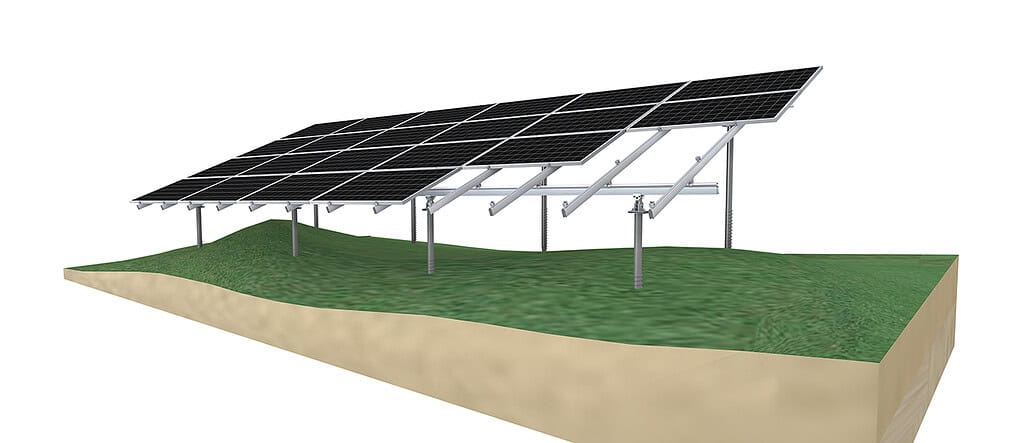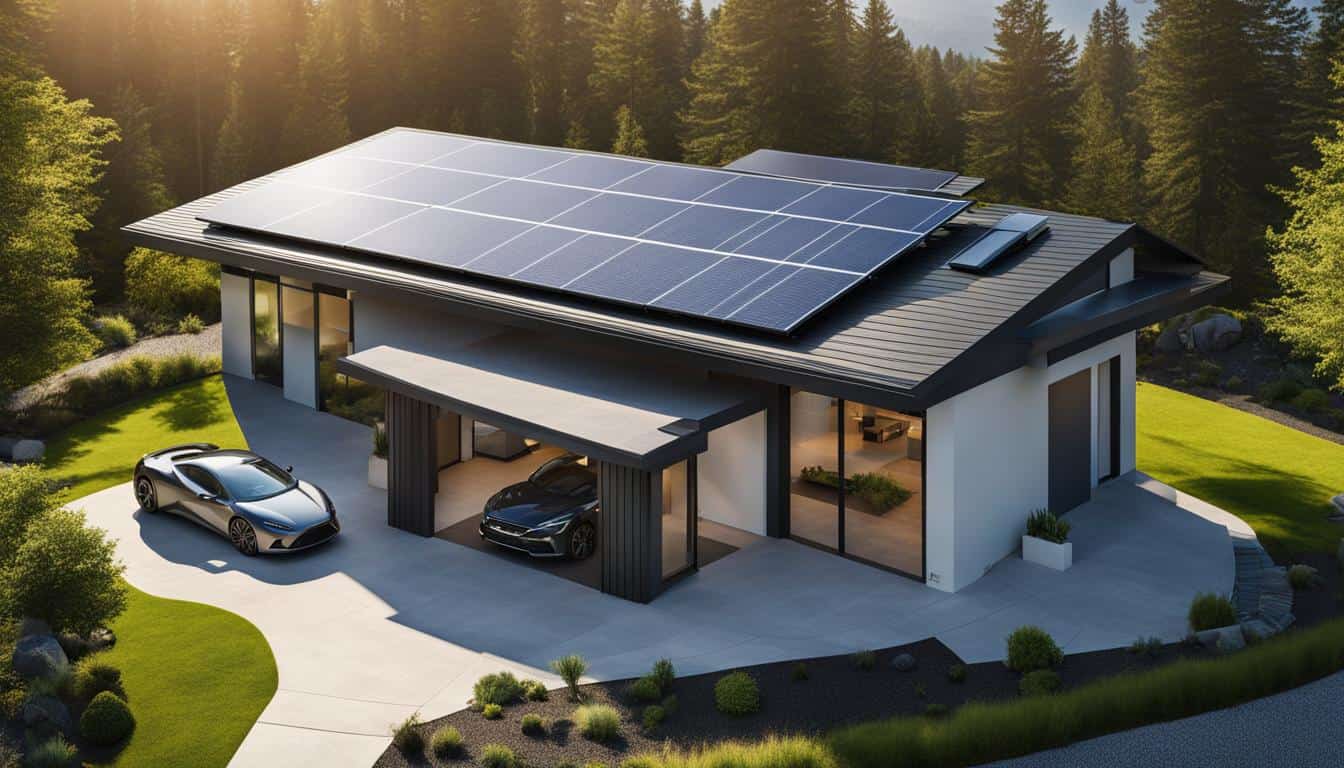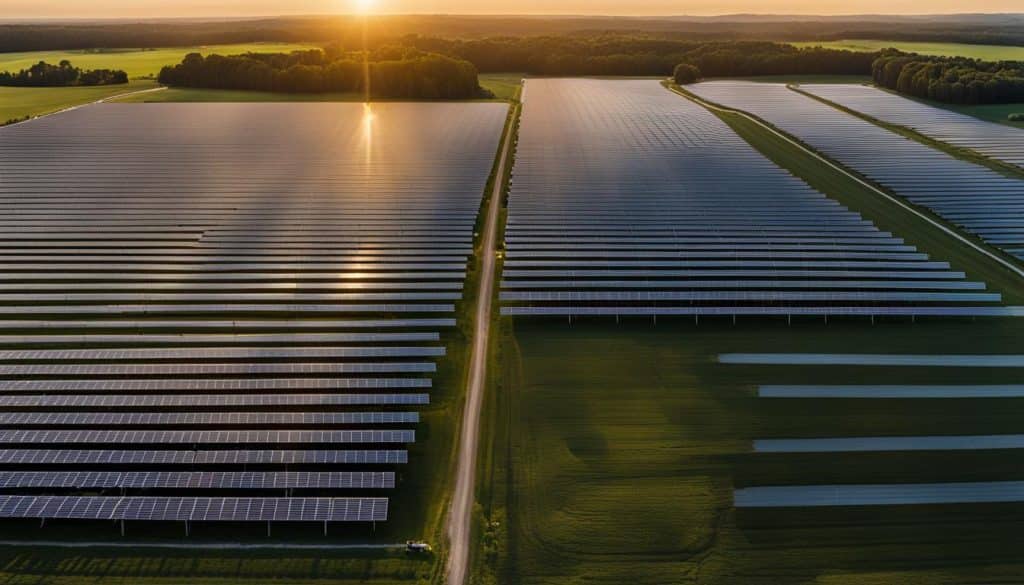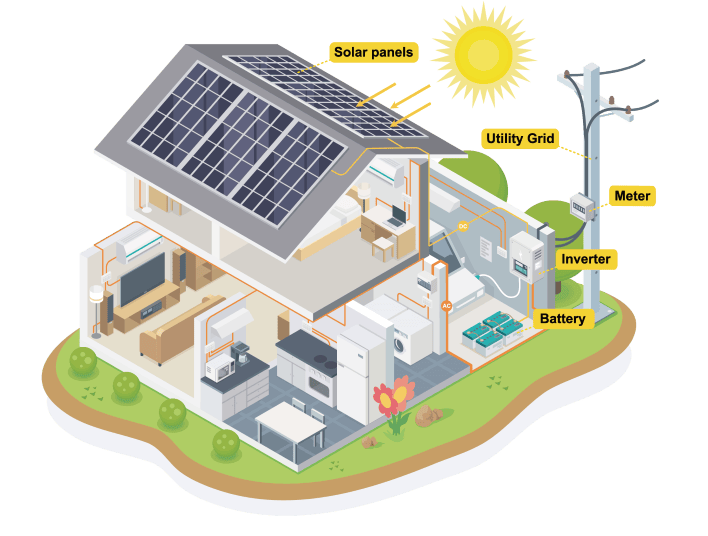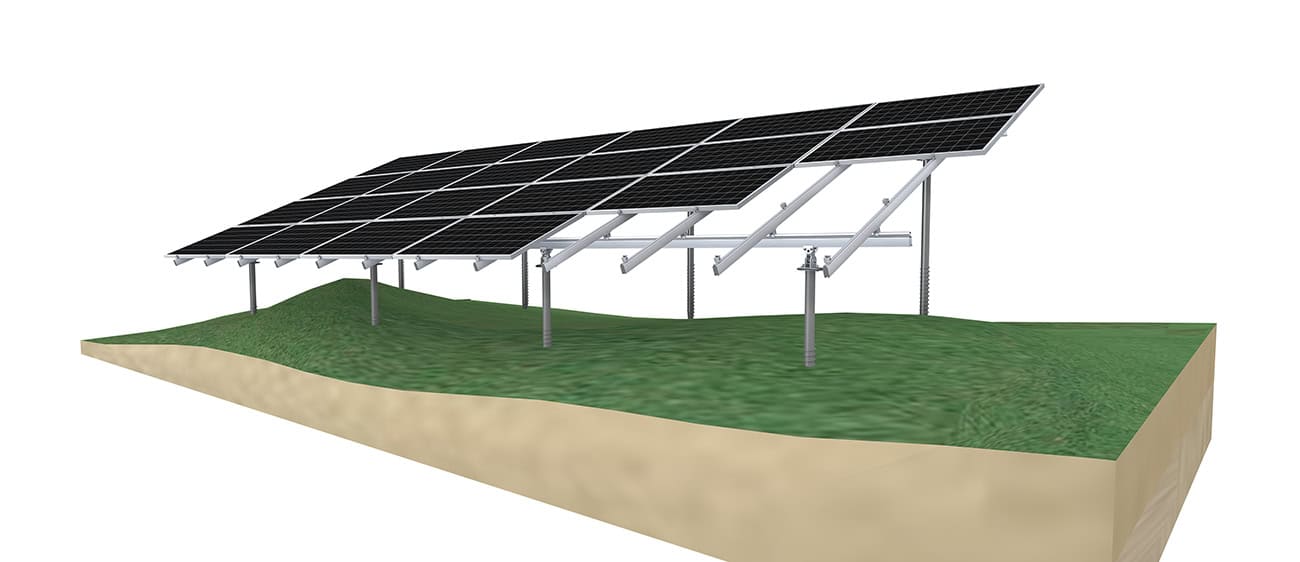Table of contents
Introduction
Harnessing the sun’s power through photovoltaic panels is a cornerstone of the modern renewable energy movement. Ground mount solar racking systems are a pivotal component of this, providing the foundation for solar panels to operate efficiently. These systems are key for anyone looking to convert open land into an energy-generating asset.
A robust solar panel ground mount racking system does more than just hold solar panels in place. It is integral to the overall performance and longevity of the solar investment. Selecting the right system involves understanding not just the mechanics of solar racking but also the specific environmental and regulatory demands of the installation site.
Ground-mounted solar systems offer versatility and efficiency, making them a popular choice for a wide range of applications. Whether you’re a homeowner looking to reduce your carbon footprint or a business seeking to capitalize on renewable energy, the right ground mount solar racking system can be a game-changer.
Types of Ground Mount Solar Racking Systems
Standard Ground Mounts
Standard ground mounts use a simple framework to support solar panels at a fixed angle. Typically, these systems involve a metal frame anchored to a concrete foundation or earth-ground screws. The panels are positioned at a predetermined angle based on geographic and climatic conditions to maximize solar exposure.
Single Pole Mounts
Pole mounts elevate panels higher off the ground and can support multiple panels on a single pole. They are particularly advantageous in areas with uneven terrain or where elevation is required to optimize sun exposure. These mounts can be fixed or designed to adjust manually to change the tilt for seasonal optimization.
Manually-adjustable/Tilt Mounts
Adjustable or tilt mounts allow for the angle of the solar panels to be altered at regular intervals, maximizing the efficiency of the panels throughout the year. While they require more maintenance due to their moving parts, they can significantly increase the energy yield of the solar array. But this is only applicable to small projects otherwise the manual work can be overwhelming.
Tracking Systems
Tracking systems are the most advanced type of ground mount racking. These dynamic systems actively follow the sun’s path across the sky, ensuring that the panels maintain the optimal angle to capture the most sunlight throughout the day. Single-axis trackers adjust on one axis, typically following the sun from east to west, while dual-axis trackers also adjust according to the seasonal height of the sun.
Each type of ground solar mounting system offers unique benefits and is designed to meet specific site requirements and performance objectives. The choice between them depends on several factors, including the installation site, budget, and desired efficiency of the solar array.
Pros and Cons of Different Materials

When selecting materials for solar panel racking systems, the choice typically revolves around three contenders: aluminum, galvanized steel, and Zn-Al-Mg coated steel, which is becoming more and more popular. Each material has its unique attributes that can influence the decision based on the project requirements, environmental conditions, and budget considerations.
Here’s the information presented in a comparative table format:
| Material | Pros | Cons |
|---|---|---|
| Aluminum | – Excellent corrosion resistance – Lightweight – Highly recyclable | – Lower strength compared to steel – Typically higher cost than steel |
| Galvanized Steel | – High tensile strength and durability, suitable for areas with heavy loads – More cost-effective than aluminum | – Corrosion resistance can deteriorate – Heavier, increasing transportation costs and installation effort |
| Zn-Al-Mg Coated Steel (Magnelis) | – Superior corrosion resistance with self-healing properties – Versatile across various environments | – Less availability – Relatively new to the solar mounting market |
Considerations For Ground Mount Solar Projects
Site Selection and Analysis
Choosing the right location for a ground solar project is crucial. The site should have ample sunlight exposure with minimal shading from trees, buildings, or other obstructions. An analysis of the site’s topography can determine the best orientation and positioning for the solar panels to ensure maximum sunlight absorption.
Soil Composition and Impact
Soil type can significantly affect the choice of foundation for the racking system. Sandy, loamy, or clay-rich soils each require different anchoring methods to ensure stability. A geotechnical survey can provide insights into the soil’s bearing capacity and help in selecting the appropriate foundation, whether it be concrete foundation, driven piles, or ground screws.
Sunlight Exposure and Shading Concerns
Assessing the site’s solar resource potential is essential. This involves understanding the path of the sun across the sky at different times of the year and identifying potential shading issues. Tools like solar pathfinder devices can assist in these assessments, ensuring that the system’s layout is optimized for unobstructed solar exposure.
Local Zoning Laws and Permitting
Before installation, it’s imperative to understand and comply with local zoning laws and building codes. These regulations may influence the system’s design and placement. Additionally, obtaining the necessary permits is a critical step that must be addressed early in the planning process to ensure legal compliance and avoid delays.
Each of these considerations plays a vital role in the planning and success of a ground solar installation. Thorough preparation and due diligence in these areas can lead to a smooth installation process and a more efficient and reliable solar power system.
Future of Ground-mount Racking Systems
The solar industry is on a constant trajectory of innovation, with research focused on developing more efficient and cost-effective mounting solutions. Advancements may include lighter and stronger materials, modular designs that simplify installation, and smart systems that can monitor and adjust to environmental conditions for optimal performance.
Emerging materials like high-performance composites, Zn-Al-Mg coated steel, or advanced alloys offer the potential for improved durability and reduced weight.
Solar panel ground mounting systems are set to play an increasingly significant role in the expansion of solar energy. They are especially crucial for utility-scale solar farms and in regions where roof-mounted systems are not feasible. As solar technology becomes more ingrained in global energy systems, solar ground mounts will continue to evolve, becoming more adaptable to various environments and more integrated with other forms of renewable energy infrastructure.
The future of ground solar mounting technology is promising, with the potential to further drive down costs and improve the adaptability and efficiency of solar power generation. This will be instrumental in accelerating the adoption of solar energy across the globe.

